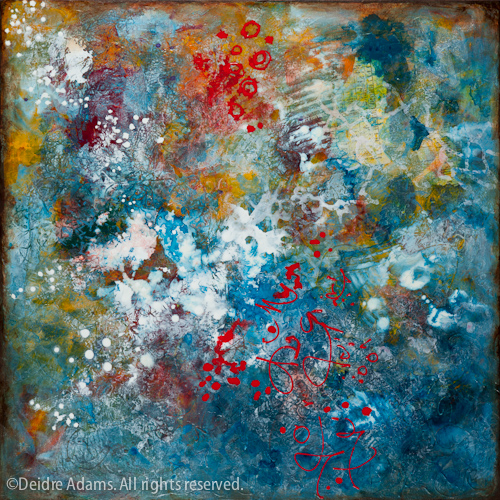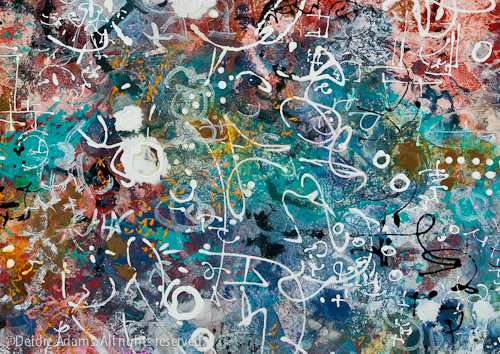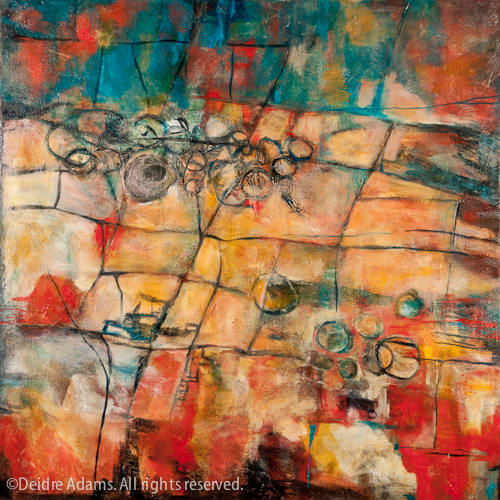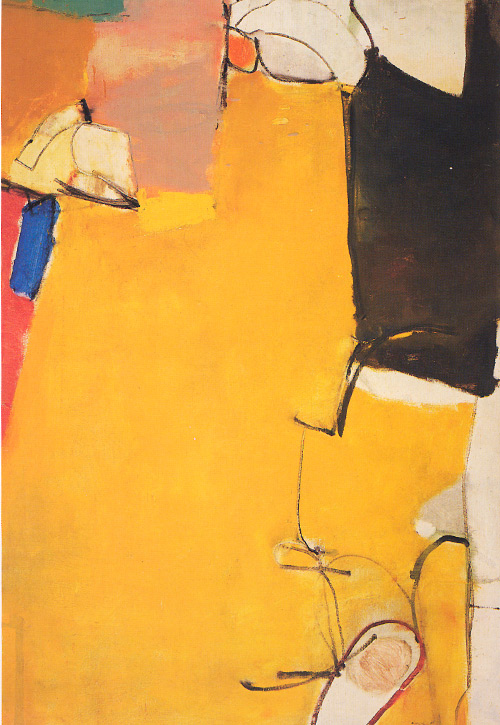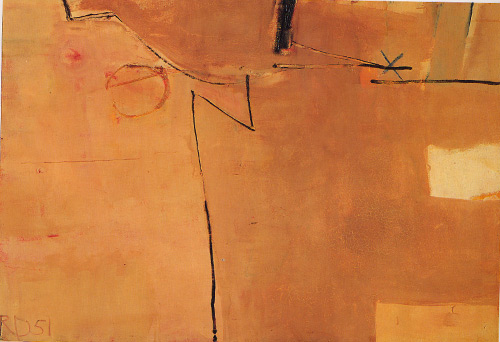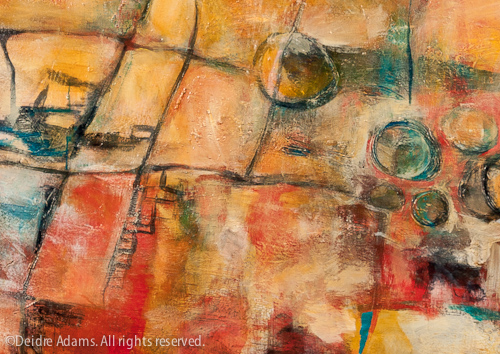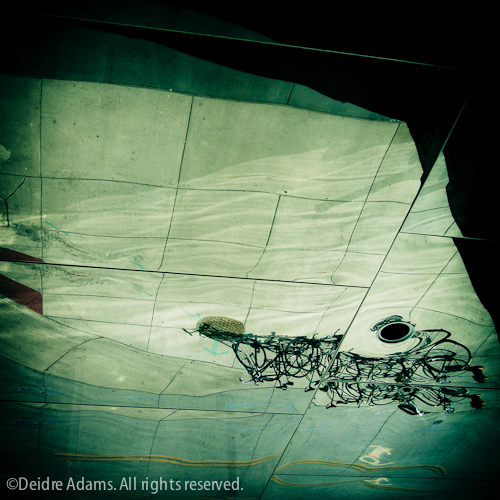Overcoming attachment
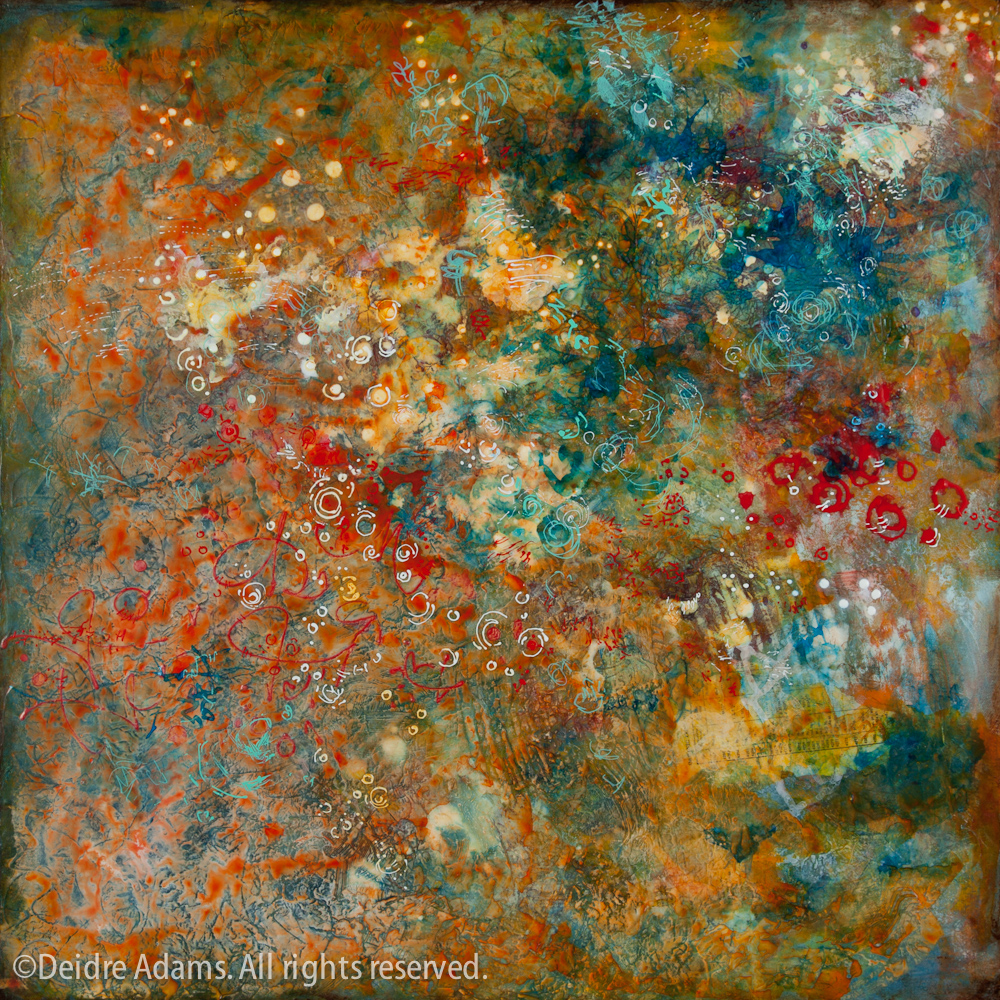 Organic Compound, 24 x 24 inches, acrylic on panel, ©2010 Deidre Adams
Organic Compound, 24 x 24 inches, acrylic on panel, ©2010 Deidre Adams
I’m finally calling this painting done. Not that I haven’t already done that – twice – but I kept thinking it needed something more. I went to a meeting of artist friends on Friday night, and the next day, while thinking about a conversation we had with the hostess while considering a painting in her studio, I was inspired to attack my own painting one more time.
My friend had made her painting over the course of a 15-week class in which the students worked on the same painting in each session of the class. I had seen my friend’s painting once before in a much earlier stage, and I was really surprised at how much it had changed by the end – I wouldn’t even have recognized it as the same painting. The final painting was fantastic, but I’d also thought the same thing about the earlier version. I asked her if it had been difficult to paint over parts of the painting that were really working. She talked about how it was part of the process to let go of attachments and learn to forge ahead without fear.
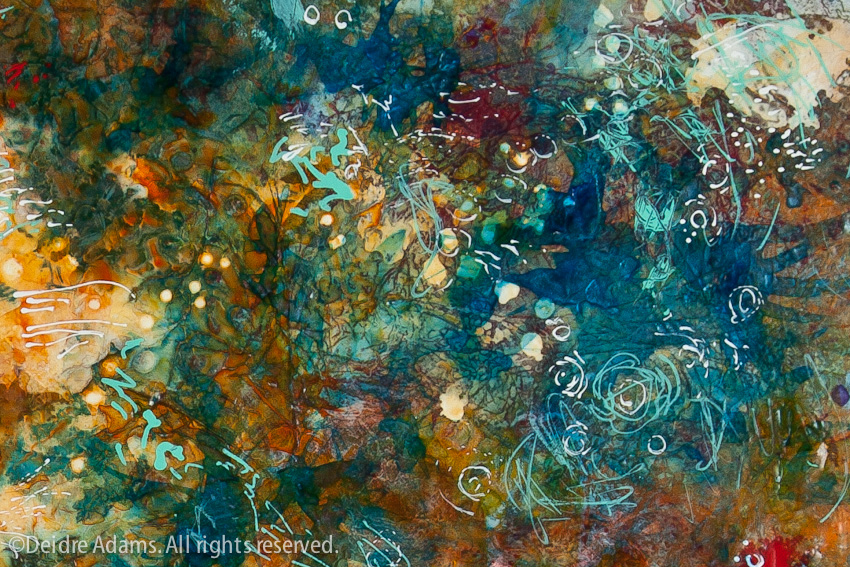 Organic Compound, detail
Organic Compound, detail
The notion of attachment really resonated with me, as I do have a tendency to fall in love with certain passages in a painting, and then the fear of messing with those keeps me from giving the painting what it needs. The image below shows the last documented state of Organic Compound before the above. I was really happy with the colors and textures, but the composition was just a little too “overall” for me and I felt it needed some punch. So my solution yesterday was to add the darker blue values in the upper right corner, plus the very detailed turquoise markings. In the process, I lost some really nice color and detail in that upper right area, but in my opinion the resulting composition is a lot stronger now.
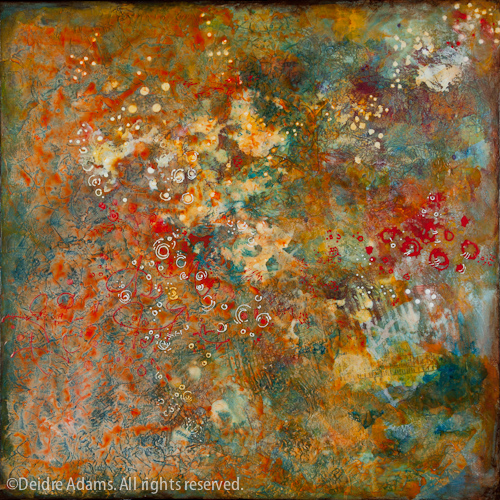
Organic Compound in progress II
Prior to that, the painting had a very different look. Below you will see how it looked for several months. I was really indecisive about where to go with it, so I just decided to make a drastic change and see where that would lead. I flooded the whole thing with warm reds and oranges, which settled very nicely into the texture and made a more cohesive result. It also changed the balance, so I rotated it one turn. (Topic for future discussion: Those who say you must be decisive in choosing the orientation vs. those who say it’s subject to change.)
Some of you may not agree that what I did was an improvement. Of course it’s my work so I have final say, but I am curious to know what you think.

